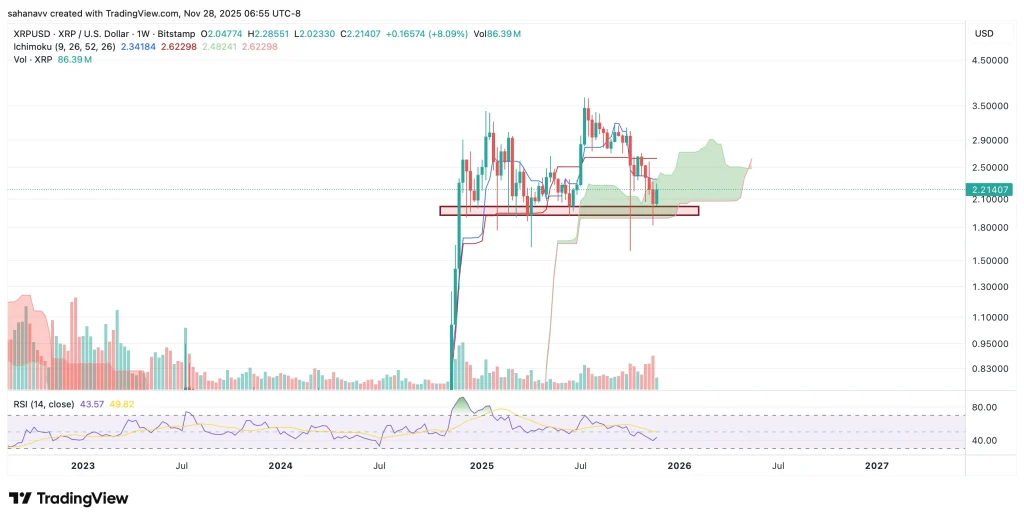Telegram's XLM Integration: A Catalyst for Stellar's Mass Adoption and Undervalued Utility Play?
- Telegram's 2025 XLM integration taps 100M+ users, leveraging Stellar's fast, low-cost cross-border transactions to address global financial gaps. - Strategic alignment with high-inflation regions and PayPal's PYUSD integration in July 2025 boosted XLM by 5%, while Protocol 23 upgrades aim to scale DeFi and RWA adoption. - XLM's 2024 daily transactions hit 5M+, with Eastern Europe's 40% DeFi growth and Asia's 502.84% price surge highlighting regional utility potential. - Risks include weak price-user corr
Telegram’s integration of Stellar Lumens (XLM) into its in-app wallet has unlocked access to 100 million+ users, positioning the token at the intersection of mass adoption and real-world utility. This move, announced in August 2025, leverages Stellar’s strengths in fast, low-cost cross-border transactions to address a critical gap in global financial infrastructure. For investors, the question is whether this integration can transform XLM from a niche remittance token into a mainstream utility asset.
The Strategic Fit: Telegram’s Reach Meets Stellar’s Capabilities
Telegram’s user base is concentrated in regions like Asia, Eastern Europe, and the Middle East—areas where cross-border remittances and financial inclusion are pressing needs. Stellar’s blockchain, with its 3-5 second transaction finality and $0.00001 fee per transaction, is uniquely suited to these markets. The integration allows users to send and receive XLM directly within the app, bypassing traditional banking systems and third-party platforms. This seamless experience could drive adoption in high-inflation economies, where Stellar’s existing partnerships with institutions like MoneyGram and the United Nations Development Programme (UNDP) already demonstrate its viability for payroll disbursements and aid distribution.
Institutional Backing and Network Upgrades: Building a Foundation for Growth
Stellar’s ecosystem has been bolstered by institutional partnerships and technical upgrades. PayPal’s planned integration of its PYUSD stablecoin onto the Stellar network in July 2025 triggered a 5% price surge for XLM, signaling growing institutional confidence. Meanwhile, Protocol 23, set to activate in September 2025, introduces parallel transaction processing and reduced smart contract costs, aiming to attract DeFi and real-world asset (RWA) projects. These upgrades, combined with Telegram’s user base, create a flywheel effect: increased transaction volumes could drive network effects, while improved scalability ensures the platform can handle the load.
Quantifying Utility: Transaction Volumes and Regional Trends
Stellar’s transaction volume has already shown resilience. In 2024, the network processed over 5 million daily transactions, with peak days exceeding 7 million. Post-Telegram integration, analysts predict a further uptick, particularly in regions where Telegram dominates. For example, in Eastern Europe, where DeFi activity grew by 40% in 2024, XLM’s low fees could make it a preferred medium for cross-border micropayments. Similarly, in Asia, Stellar’s partnership with a major international payment provider has already driven a 502.84% price surge in early August 2025, suggesting strong regional demand.
Challenges and Risks
Despite the optimism, risks remain. XLM’s price has shown weak correlation with user activity, dropping to $0.39 in late August 2025 despite record transaction volumes. Additionally, over 1.03 billion XLM tokens are held on exchanges, raising concerns about potential sell-offs. Regulatory scrutiny in key markets could also dampen adoption, particularly in the Middle East, where crypto regulations are still evolving.
Conclusion: A Utility Play with Long-Term Potential
Telegram’s XLM integration is a pivotal moment for Stellar. By combining Stellar’s technical strengths with Telegram’s global reach, the platform addresses a critical need for accessible, low-cost cross-border payments. While short-term price volatility persists, the long-term case for XLM hinges on its ability to cement itself as a backbone for financial inclusion. With Protocol 23 upgrades and institutional partnerships, Stellar is positioning itself not just as a remittance token but as a foundational layer for global finance. For investors, this represents a high-conviction play on a utility-driven asset with undervalued potential.
**Source:[1] Telegram Gives 100M+ Users Key to Stellar's Fast, Low-Cost Blockchain [2] Stellar (XLM) Gains 5% with PayPal PYUSD Integration [3] The future of crypto in the Asia-Middle East corridor lies [4] Stellar ($XLM) Surges 11% to $0.45: Upgrades, Regulatory ... [5] 2024 Eastern Europe Crypto Adoption: DeFi Drives Growth
Disclaimer: The content of this article solely reflects the author's opinion and does not represent the platform in any capacity. This article is not intended to serve as a reference for making investment decisions.
You may also like
No wonder Buffett finally bet on Google
Google holds the entire chain in its own hands. It does not rely on Nvidia and possesses efficient, low-cost computational sovereignty.

HYPE Price Prediction December 2025: Can Hyperliquid Absorb Its Largest Supply Shock?

XRP Price Stuck Below Key Resistance, While Hidden Bullish Structure Hints at a Move To $3

Bitcoin Price Prediction: Recovery Targets $92K–$101K as Market Stabilizes